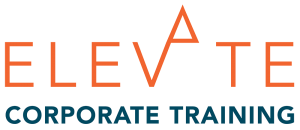Dress professionally. Stand up straight. Look them in the eye. You’ve probably heard all these things before. When it comes to sales presentations, it all comes down to one thing: are you presenting a solution to a prospect that fits their needs or solves their problems. If you can’t demonstrate the value of what you’re proposing, nothing else matters. If you can’t present a solution, the presentation isn’t likely to succeed.
Preparing for the Sales Presentation
Before you think about the presentation, you’ve got to first complete the first part of the sales process: the prospecting, connecting, and qualifying stages.
- Prospecting
In the Prospecting phase, your goal is to identify potentially viable candidates for your products or services. It typically includes things such as online research, networking at industry events, or getting referrals. Doing these basic steps allows you to forgo the dreaded cold call and be armed with some information before you pick up the phone or send the email.
- Connecting
In the Connecting phase, you’re reaching out to have an initial conversation. It’s an information-gathering mission to find out whether a potential customer is indeed viable. Turning someone from a lead to a qualified lead is crucial. You can waste a lot of time talking to people who aren’t qualified, so the sooner you can clear that bar, the better you are.
- Qualifying
Your company may have specific requirements or guidelines for qualifying. For example, from experience, some companies might know that organisations with revenues less than $5 million annually are poor prospects. Or, they might know that organisations with less than $5 million in annual revenue are the best prospects!
Regardless of your company’s guidance, leads must meet these three questions criteria before they become qualified and they’re worth your further investment:
- They have a demonstrated need for what you’re selling
- They have the financial ability to pay for your products or services
- They have the authority and ability to say yes
If they can’t fulfill one of these three criteria, no presentation is going to get you the sale.

Improving Your Sales Presentation Skills: The Three P’s
Once you’ve prospected, connected, and qualified a lead, you’ve made it past a big hurdle. Congratulations! Now, it’s time to think about the sales presentation and how you can use your sales skills.
Before you start framing up a formal presentation or demonstration of a product or service for prospects, you need to focus on the “Three P’s:”
- Preparation
- Presentation
- Practice
- Preparation
This is the first, and perhaps the most critical, step in improving your sales presentation skills. Do your homework to understand your target customer’s needs. As your presentation will be tailored to meet your target prospect’s unique use case, you’ve got to do a bit of detective work to do.
This means some back and forth conversation to understand the customer’s needs and identify the pain points that your product or service can ease.
- Presentation
The presentation itself has a straightforward goal. You need to demonstrate how you can solve their problem or meet their goals. If your presentation does nothing else, it needs to frame the problem and showcase a solution.
There are several sales techniques when it comes to presentation. One effective way is to start by identifying the pain point and summarizing the situation based on your conversations. Avoid the temptation to gloss over the problem and skip right to your solution. You need to demonstrate to your potential customer that you understand their problem. It also helps to emphasize the problem. You are reinforcing the situation and forcing the prospect to feel the pain. It helps to increase the sense of urgency to solve the problem.
When it comes to discussing the solution – your product or service – the most successful salespeople know to focus on the benefits rather than features. It’s not about what your product can do, it’s about what it can for them. How can it solve their specific problem?
Constructing a successful presentation is also about reducing risk. You can do this by showing how your product worked well for others in a similar situation. Case studies, customer testimonials, and stories help sell the concept and reduce risk. Make sure to quantify results. It’s not enough to say we generate more leads with our software, or you will sell more widgets. It’s better to say Company X increased their qualified leads by 16% in just 2 weeks, or after using our proven technique, Company Y gained 14 points of market share. Just make sure it’s an honest reflection of what reality.
Be careful when picking your case studies or success stories. It can look impressive to show a list of clients you work with, but it can also be a gamble. Let’s say you show that you work with Fortune 500 companies. A prospect may be led to believe your product isn’t right for their mid-sized business. You’re better off finding similar sized companies with similar problems.
Only talk about the price after you establish product value.
- Practice
A common mistake even veteran salespeople make is to do all the work to prepare for the presentation phase and then fail to practice. If you’ve put in all the time to get to this stage, doesn’t it make sense to rehearse? Grab a manager, a colleague, or a friend and ask them to listen with a critical ear and practiced eye. It’s amazing how often you won’t catch typos or mistakes in your presentation until someone else looks at it objectively.
If you are using technology for your presentation, test it out and bring everything you’ll need. Assume your internet connection won’t work, your laptop will die, or the video won’t play. Prepare printed materials and alternate ways to deliver your message. If all you have is you, can you confidently get the message across without any supporting material?
Don’t make your mistakes – or present your solution – for the first time in front of your potential customer. Think about how athletes prepare for the big match. They train most of their lives to reach the heights of their professions. Then, what do they do? They practice their game plan over and over and over again to get it just right. They’ll often practice for days or even weeks to prepare for a few hours on the athletic field.
Sales training – and sales practice – can help you refine your presentation technique.
Ask for the Sale!
When you get to the end of the presentation, ask for the sale. It’s amazing how many salespeople wrap up and leave it up to the prospect to decide how to move things forward. If you can close it, congratulations again! If not, you need to probe for objections and try to counter each one. If you that effectively, you’ll move closer to the close and onboarding process.
An effective presentation starts with identifying the right prospect, getting the decision-maker to sit for the presentation, and focusing your efforts on meeting their needs.

